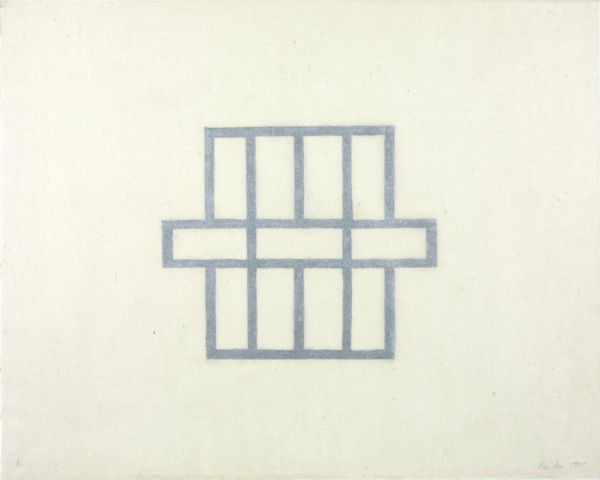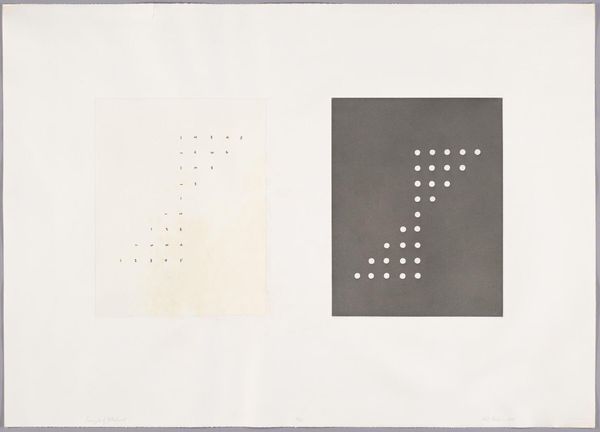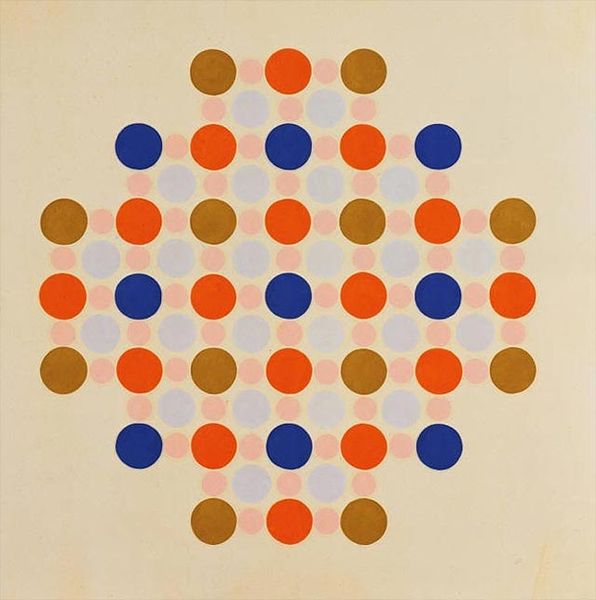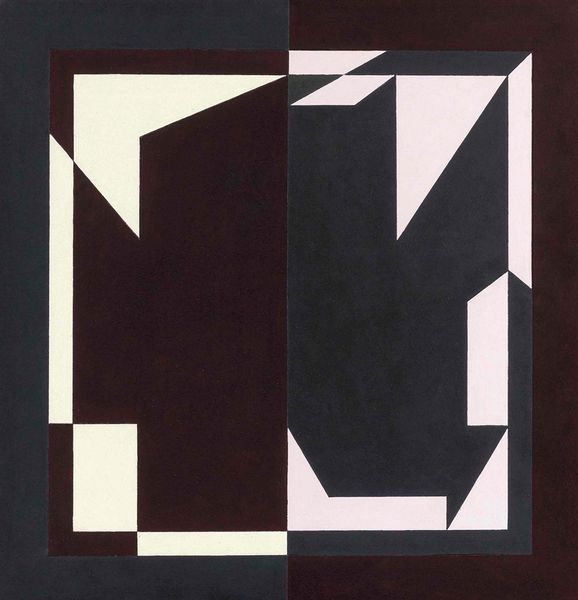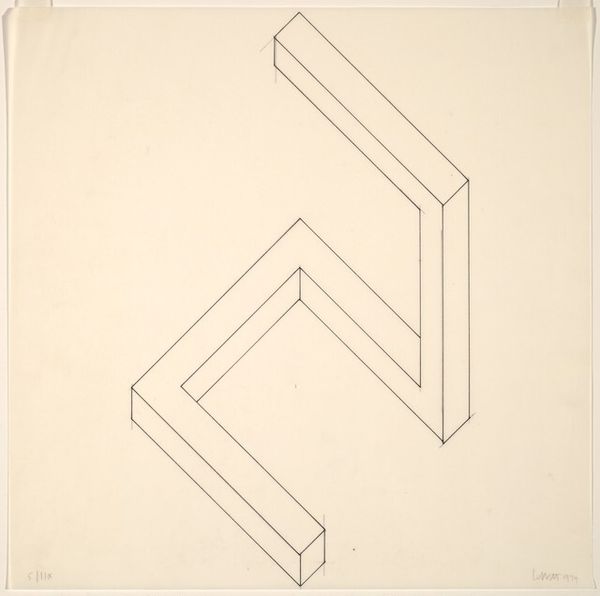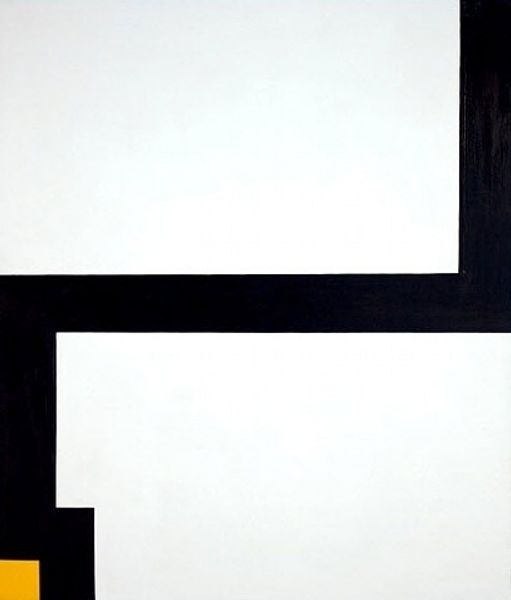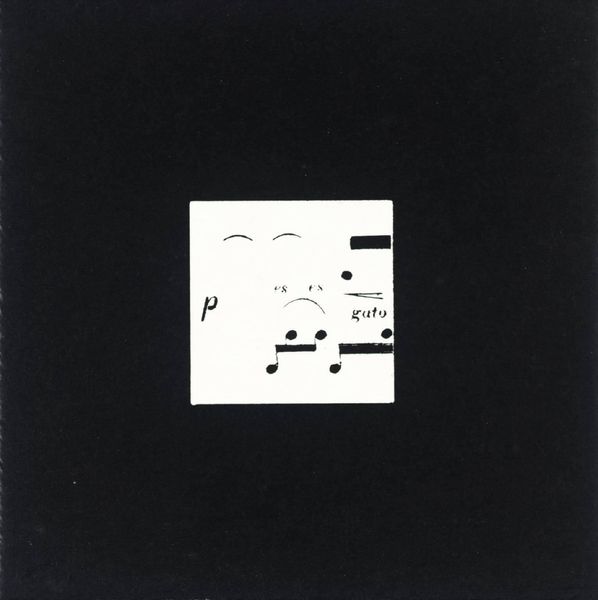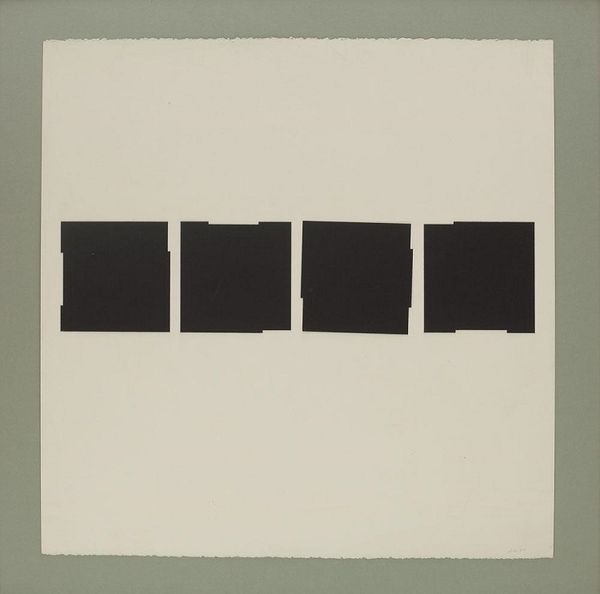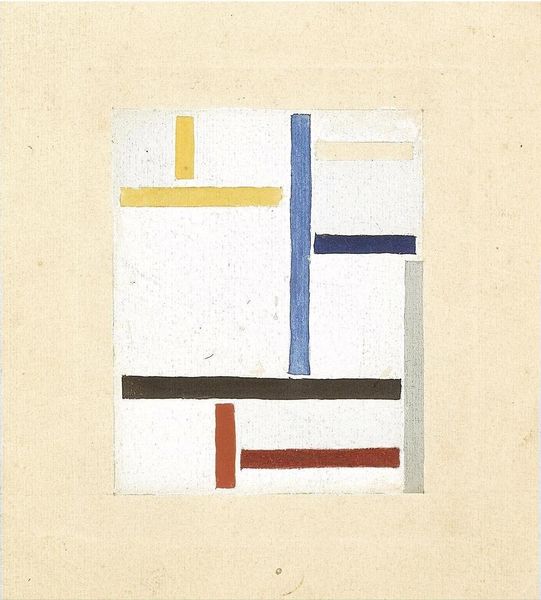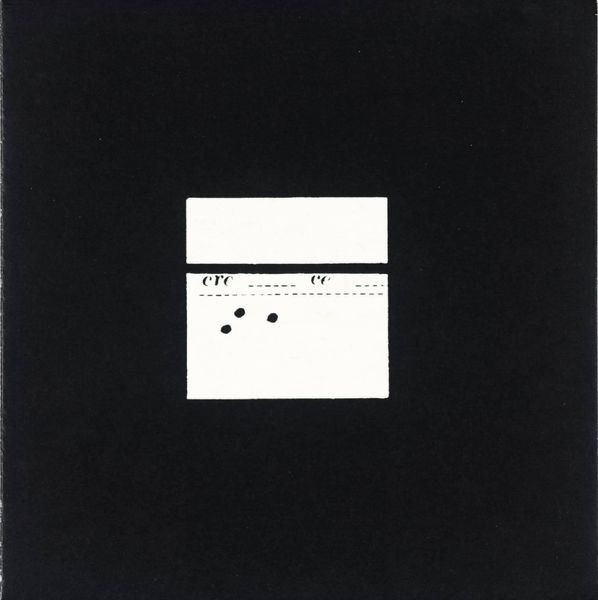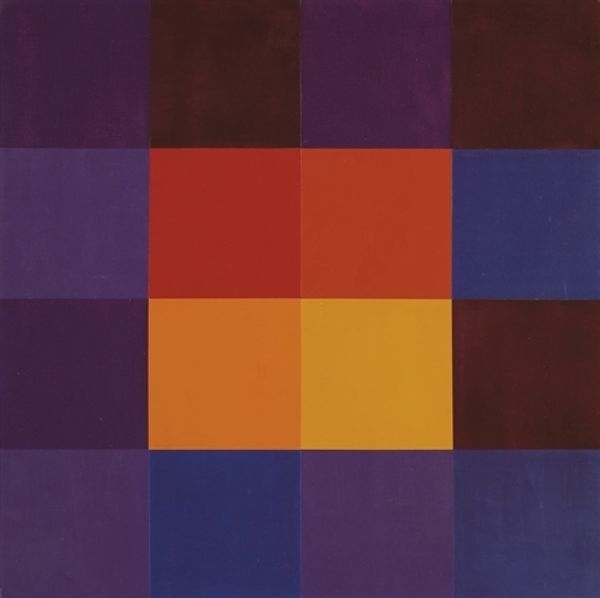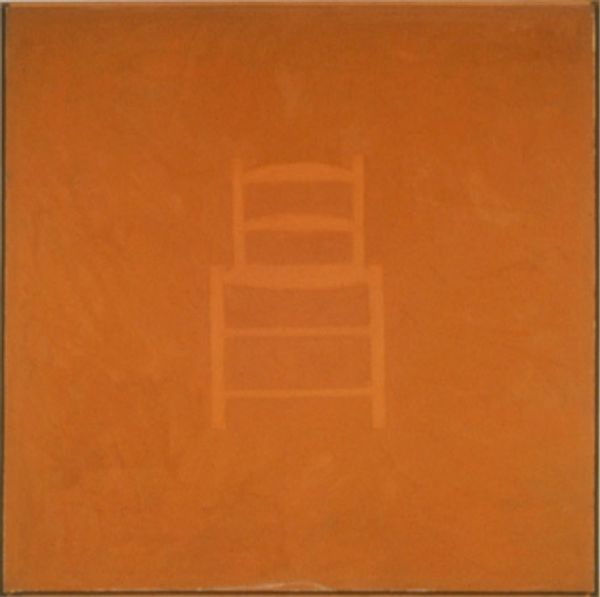
acrylic-paint
#
abstract-expressionism
#
acrylic-paint
#
geometric
#
abstraction
#
hard-edge-painting
Copyright: Doug Ohlson,Fair Use
Curator: Looking at this work, the off-white expanse is so stark, only interrupted by these five uniform apricot squares. Editor: Indeed. This is "Mana," a 1964 acrylic on canvas by Doug Ohlson. Its seeming simplicity draws us into a discourse about presence and absence within Abstract Expressionism and the burgeoning Hard-edge painting movement. Curator: The choice of placing these squares in a cross formation... is it a commentary on institutional power, perhaps? Does this reflect on systems of marginalization prevalent during the mid-20th century? Editor: Perhaps, but I also see a pure exploration of form and spatial relationships. The color interaction between the muted background and the gentle warmth of the squares creates a very subtle visual vibration. Notice how the negative space defines the shapes just as much as the pigment itself. It exemplifies how seriality operates, akin to mathematical ordering. Curator: But consider the political climate of '64— the Civil Rights Movement was intensifying. Artists couldn’t help but be affected by the profound socio-political struggles for power and identity. So, these squares aren't simply formal devices—they become placeholders. Each, possibly, could stand in for individual or a people. Editor: I understand the impulse to read political allegory, but I would not rule out Ohlson was primarily concerned with creating a self-referential work. He wants to demonstrate the fundamental language of painting. By stripping away representation, he foregrounds our experience of color, shape, and spatial intervals, achieving visual poetics via geometry. Curator: Well, to me, the piece seems to function almost as a map. Five territories isolated within a larger expanse. They highlight how identities and cultural zones are situated in the landscape. Editor: Yes, that's a valid way to view it—a convergence of formal austerity with culturally-inflected interpretation opens so much! Curator: Exactly. It reminds me to be ever attentive to historical conditions that surround works of art that can give insights into abstract artistic decisions and political positions of makers and sitters alike. Editor: A valuable lesson, certainly. It just goes to show the complexities held within these visual and material planes, or fields, even in such reduced configurations.
Comments
No comments
Be the first to comment and join the conversation on the ultimate creative platform.
